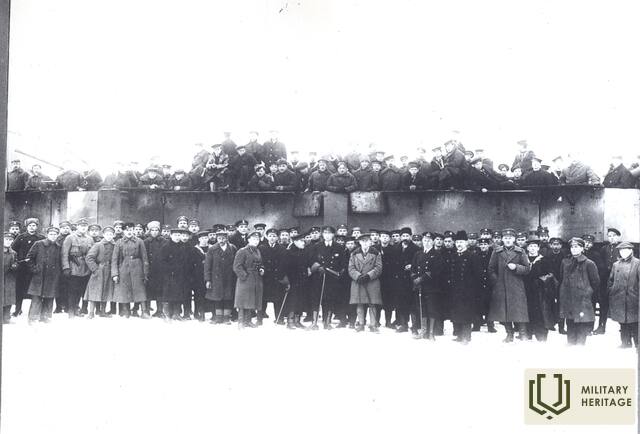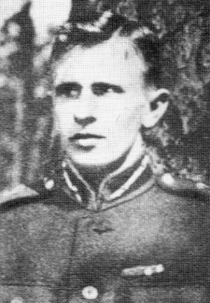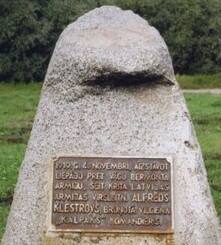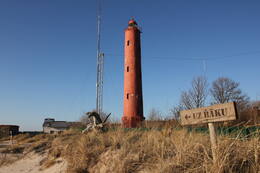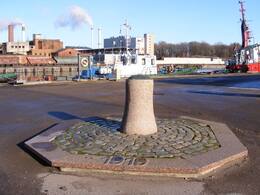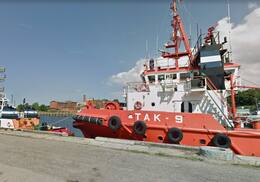Latvijos armijos šarvuotasis traukinys Nr. 5 arba „Kolpaks“
Latvijos armijos šarvuotasis traukinys Nr. 5 arba „Kalpaks“ buvo lengvasis šarvuotasis traukinys, naudotas Latvijos ginkluotosiose pajėgose 1919 m.
Traukinys buvo apkaltas metalinėmis plokštėmis, turėjo tik du šarvuotus vagonus, vieną iš dalies šarvuotą lokomotyvą ir platformą, kurios šoną buvo galima naudoti kaip priedangą šaudant, taip pat vidinę ryšio sistemą. Šarvuotas traukinys buvo pagamintas Liepojos geležinkelio depo dirbtuvėse ir pradėtas eksploatuoti 1919 m. spalio 28 d.
Pastatyta Liepojos geležinkelio dirbtuvėse, vadovaujant inžinieriui SPROGE, pulkininko DANKERS įsakymu. Po visiško suformavimo traukinio ginkluotė: 2 vagonai su kulkosvaidžiais (Lewis sistemos), savaeigiais pabūklais ir keliais Maxim sistemos kulkosvaidžiais; 1 tenderis su 1 naujo tipo angliška 3 colių jūrine patranka, 1 keturguba PULMAN platforma su 2 senesnio tipo angliškomis jūrinėmis patrankomis galuose ir 1 38 mm Vickers priešlėktuvine patranka viduryje, 1 prekinis lokomotyvas, 1 vagonas su 60 cm prožektoriumi. Vagonai ir lokomotyvas ginkluoti iš viršaus ir šonų, patrankų platformos šonuose atviros. Šarvai pagaminti iš maždaug 15–20 mm storio laivinio katilo skardos. Be to, keli prekiniai vagonai įrengti gyvenamiesiems tikslams, o kai kurios platformos – geležinkelio remonto medžiagomis. Visi riedmenys gauti prastos būklės, kuri tuo metu buvo Liepojos operacijos žinioje. Pulkininko DANKERO įsakymu traukiniui suteiktas pavadinimas „Kolpaks“, tuometinio Liepojos operacijos vado padėjėjo BĒRZIŅOS siūlymu.
Susijusi laiko juosta
Susijusios vietos
Paminklas Latvijos armijos leitenantui Alfredui Klestrovui, šarvuotojo traukinio „Kalpaks“ mūšio vieta
Šarvuotojo traukinio vadas leitenantas leitenantas Alfredas Klestrovas, gimęs 1897 m. kovo 8 d. Liepojoje. Baigė Liepojos miesto mokyklą, vėliau – matininkų mokyklą Rygoje.
Pirmojo pasaulinio karo metu pašauktas į Rusijos armiją, baigė bataliono mokyklą Maskvoje. Tarnavo Rumunijos fronte, kovojo Ukrainoje. Kai Ukrainą okupavo vokiečių kariuomenė, grįžo į Rygą.
Ordinas buvo įteiktas 1922 m.
1919 m. pavasarį pašauktas į Latvijos kariuomenę, tarnavo papildomame 3-iosios Latgalos divizijos batalione. 1919 m. spalį paskirtas į šarvuotą traukinį „Kalpaks“ vadu.
1919 m. lapkričio 4 d., vokiečiams puolant Liepoją, šarvuoto traukinio „Kalpaks“ vadas leitenantas Alfredas Kliestrovas, apšaudomas sunkiąja artilerijos ir kulkosvaidžių ugnimi, surengė kontrataką ir su šarvuočiu traukiniu pateko į priešo užnugarį. Nesugebėjęs atidengti patrankų ugnies, jis vadovavo savo komandai durtuvų mūšyje ir išsklaidė priešą, taip prisidėdamas prie bermontiečių puolimo atsitraukimo, tačiau pats šiame mūšyje žuvo nuo vokiečių kareivių, kurie buvo įsitvirtinę namuose ir liko už Latvijos armijos kareivių nugaros, kulkos.
1935 metais Liepojos geležinkelio ir Liepojos-Grubinios plento sankryžoje, šarvuoto traukinio „Kalpaks“ vado leitenanto Alfredo Klestrovo žūties vietoje, buvo pastatyta atminimo lenta.
Paminklas kariams, žuvusiems Liepojos išvadavimo kovose, Šiaurinėse kapinėse
Pagrindinė Liepojos Nepriklausomybės kovų atminimo vieta yra Šiaurinėse kapinėse, kur 1924 m. lapkričio 24 d. buvo atidengtas K. Bikšės-Pikšės suprojektuotas paminklas žuvusiems išsivadavimo kovose netoli Liepojos. Paminklas buvo apgadintas Antrojo pasaulinio karo metu, bet buvo atstatytas 1989 m.
Akmeņrago švyturys ir „Saratovo“ likimas
Akmeņrago švyturys yra Sakos valsčiuje, 10 kilometrų į pietvakarius nuo Paviluostos. Į švyturio viršūnę galima patekti spiraliniais laiptais, iš jos atsiveria vaizdas į jūrą ir aplinkinius miškus. Dabartinis 37 metrų aukščio švyturio bokštas buvo pastatytas 1921 m., o ankstesnis švyturys buvo sunaikintas per Pirmąjį pasaulinį karą.
Akmeņrago švyturys išsiskiria iš kitų Latvijos švyturių, nes yra vienoje pavojingiausių laivybai vietų visoje Baltijos jūros pakrantėje. Švyturio signalinis spindulys žymi uolėtą krantą, kuris šiaurės vakarų kryptimi tęsiasi maždaug dvi jūrmyles arba 3,7 kilometro į jūrą. Kranto gylis yra kiek daugiau nei du metrai. Švyturio vieta nepakito, tačiau pakrantė bėgant metams tolsta. Nors navigacijos šviesa čia yra nuo 1879 m., Akmeņrage įvyko keletas laivų avarijų. Žymiausia įvyko 1923 m. rugsėjį, kai į seklumą atsitrenkė Latvijos garlaivis „Saratow“. 1919 m. Saratovas trumpai buvo Latvijos laikinosios vyriausybės būstinė. Akmeņrage anksčiau buvo pasienio apsaugos postas, čia galima apžiūrėti sovietų armijos pastatus.
Laivo „Saratov“ prieplauka Liepojoje
„Saratov“ prieplauka yra Liepojoje, Senojoje uoste, 59, netoli laivų prieplaukos.
Pastatytas 1888 m. Kopenhagoje laivų statyklos „Buvmeistar & Wain“ pavadinimu „Leopold II“, 1911 m. jį įsigijo akcinė bendrovė „Russian North-West Shipping“ ir pervadino į „Saratov“, o laivo kapitonu tapo latvis Aleksandras Remessas.
1915 m. gegužę, kai Liepoją okupavo vokiečių kariuomenė, laivas „Saratovas“ uoste buvo apgadintas.
1919 m. sausio 10 d. garlaivį „Saratov“ perėmė Latvijos laikinoji vyriausybė. Nuo 1919 m. balandžio iki liepos mėn., po „balandžio 16 d. perversmo“, K. Ulmanio vadovaujama laikinoji vyriausybė buvo „Saratov“ laive ir buvo priversta slėptis sąjungininkų laivyno globoje.
1919 m. liepos 8 d., laikinajai K. Ulmanio vyriausybei perdavus Rygą, garlaiviai buvo naudojami susisiekimui tarp Rygos, Ventspilio ir Liepojos.
Pagal 1920 m. rugpjūčio 11 d. Latvijos ir Sovietų Rusijos taikos sutarties sąlygas garlaivis „Saratovas“ turėjo būti grąžintas Sovietų pusei. 1923 m. sausio 2 d. garlaivis buvo perduotas Sovietų Rusijos atstovui. 1923 m. sausio 15 d. garlaivis „Saratovas“ sudužo prie Akmenrago krantų.
1936 m. Latvijos jūrų departamentas pardavė nuolaužas įmonei, kuri jas sutvarkė ir perdavė Liepojos audinių fabrikui.
Tikroji laivo „Saratov“ švartavimosi vieta
Tikroji laivo „Saratov“ prieplauka yra Liepojoje, Vecā ostmalā 59, netoli laivų prieplaukų, tačiau memorialas yra visai šalia Liepojos specialiosios ekonominės zonos.
Pastatytas 1888 m. Kopenhagoje, laivų statykloje „Buvmeistar & Wain“, pavadinimu „Leopold II“. 1911 m. jį įsigijo Rusijos šiaurės vakarų laivybos kompanija ir pervadino į „Saratov“, o laivo kapitonu tapo latvis Aleksandras Remessas.
1915 m. gegužę, kai Liepoją okupavo vokiečių kariuomenė, laivas „Saratov“ buvo uoste apgadintas.
1919 m. sausio 10 d. garlaivis „Saratov“ buvo perimtas Latvijos laikinosios vyriausybės reikmėms. Nuo 1919 m. balandžio iki 1919 m. liepos mėn. K. Ulmanio vadovaujama laikinoji vyriausybė po „Balandžio 16-osios perversmo“ buvo laive „Saratov“, kuris buvo priverstas ieškoti prieglobsčio sąjungininkų laivyno globoje.
1919 m. liepos 8 d., atvedus į Rygą K. Ulmanio laikinąją vyriausybę, garlaivis buvo naudojamas eismui tarp Rygos, Ventspilio ir Liepojos.
Pagal 1920 m. rugpjūčio 11 d. Latvijos ir Sovietų Rusijos taikos sutarties sąlygas garlaivis „Saratov“ turėjo būti grąžintas sovietų pusei. 1923 m. sausio 2 d. garlaivis buvo perduotas Sovietų Rusijos atstovui. 1923 m. sausio 15 d. garlaivis „Saratov“ žuvo netoli Akmeņrago.
1936 m. Latvijos jūrų departamentas pardavė laivo nuolaužas įmonei, kuri jas iškėlė ir perdavė metalo laužui Liepojos vielos gamyklai.




